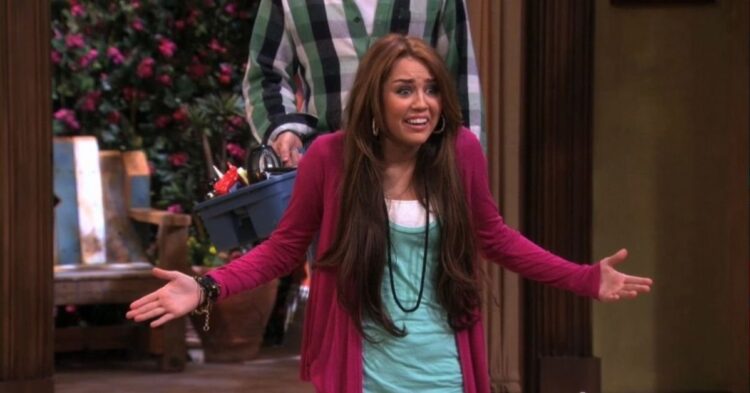When you think of Disney, things like “light and fluffy” may come to mind.
But if you really dig deeper, you’ll see that their content isn’t all butterflies, talking animals, and cliché happy endings.
They’ve also tackled serious subjects, such as racism, sexuality, and mental health. And when they do, they do so with grace.
Here are 10+ examples.
1. When *Lilo & Stitch* handled grief.

Lilo developed a lot of grief and abandonment issues after losing both of her parents in a car crash at an early age.
With support from her older sister Nani, she encourages Lilo to adopt a dog to help her separation anxiety. This, of course, led to her adopting her new best friend, Stitch.
2. When *Dumbo* handled cruelty.

Dumbo was inspired by the elephant Jumbo, an African elephant who was forced to eat coins and drink alcohol in 1882.
So when the 1941 animated classic Dumbo came out, it was quite progressive for its age.
It presented animal cruelty within the circus’ by demonstrating how baby elephants are taken from their mothers at a very early age.

When it was announced that a live-action adaptation was on its way, many were wondering about the use of live elephants.
This brought up the question of animal cruelty once again.
But director Tim Burton did the right thing by opting to use CGI to ensure that there would be no harmed animals in making the film.
3. When *Inside Out* handled difficult emotions.

The movie follows 11-year-old Riley and her “emotions” after she suddenly moves across the country, leaving her friends behind.
When the emotion “Sadness” takes over, Riley learns to accept her emotions and find the “Joy” in a dark place, thus inspiring young female viewers.
4. When *A Bug’s Life* handled overcoming oppression.

A Bug’s Life speaks to the struggle and oppression from the heavily militarized grasshoppers expanding to take over the ant’s colony.
It’s the inspiring main character Flik who proves a single ant can make the difference by recruiting bugs to fight back.
5. When *The Proud Family* addressed Islamophobia.
In the episode “Culture Shock,” the family swaps houses for a week with the Pakistani Muslim character, Radika Zamin.
Sadly, this soon gives the family a look at Islamophobia in America when their home is vandazlied.
The words “Go back to your country” were written on the garage.

Penny, the main character, handles the situation with grace.
She chooses to wear her scarf as a hijab, stating, “I would rather be judged for who I am, not necessarily how I look.”
6. When *Frozen* dealt with sibling issues.

The incredibly complex bond between siblings was put on display between Anna and Elsa in Frozen .
They perfectly demonstrated the realistic love/hate relationship that many siblings have. In their case, Anna wants to get closer to her sister, while Elsa pushes her away.
7. When *Toy Story 3* dealt with aging.

Getting older is never easy.
The subject of outgrowing your youth becomes prominent in basically all of the Toy Story movies.
But it especially becomes prominent in Toy Story 3 when Andy makes the choice of moving on from his toys as he heads off to college.
The movie handled this with grace, as Andy ended up giving Bonnie his toys.
This ended up serving as a reminder that everything is full-circle.
Andy may have outgrown his toys, but now Bonnie gets to experience their magic.
8. When *That’s So Raven* handled racism.

While Raven and Chelsea are trying to get jobs in retail , Chelsea lands the job while the aspiring fashion designer Raven is turned down.
In a vision, Raven sees the manager say “I don’t hire black people.”
Disney didn’t shy away from doing what’s right in that situation.
With the help of Chelsea and Raven’s family, they expose the manager and hopefully pave the way for other potential employees to be treated better.
9. When *Cinderella* overcomes neglect and abuse.
Although Cinderella is genuine and kind, she is constantly neglected and abused by her stepmother and three stepsisters. At one point, she even has her homemade dress ripped to pieces.
With Cinderella getting her happy ending with Prince Charming, this proved that good prevails.
10. When *Andi Mack* handled Cyrus coming out to his friends.

Instead of being met by homophobia, he was accepted by all of his friends with love and support.
This is the kind of acceptance that more viewers want to see.
11. When *Girl Meets World* handled a character with Aspergers.

When Smackle revealed that she has Asperger’s, her friends didn’t reject her or treat her differently.
They became more aware of her triggers and boundaries, like when Riley would ask before hugging her.
12. When *Up* handled miscarriage.
This was definitely one of the saddest intros of a Disney movie. But it proved that they won’t shy away from difficult subjects, such as miscarriage or grief.
It also showed the love and support from Ellie’s husband that got her through.
13. When *Aladdin* handled poverty.

The film depicts two contrasting lifestyles: the royal castle and the impoverished streets of Agrabah.
Disney addresses extreme poverty in one of the first scenes of Aladdin by showing two hungry children digging through the trash. To help them, Aladdin provides them with stolen bread.
14. When *Hannah Montana* handled diabetes.

In the episode “No Sugar, Sugar,” Oliver is diagnosed with diabetes .
But when his friends freak out, Oliver addresses the seriousness of it while still making it clear that he doesn’t need to feel different or ashamed.

















































